READ THE UPDATED VERSION OF THIS POST HERE
Field Insect Super Macro Photography Methods
There are many ways to achieve super macro magnification for insect field work, but many have prohibitive disadvantages. Some are costly such as Canon’s remarkable MP-E 65mm lens. Others require highly specialized gear like enlarger lenses. And some configurations are suited for studio photography of dead specimens, but can be too cumbersome for field work like stacked lenses and bellows. There are, however, surprisingly simple and inexpensive ways to produce high quality super macro photography with equipment that’s either inexpensive or that you probably already own.
What is “super” macro photography? I define super macro as a 2:1 magnification or greater. 2:1 is generally what it takes to fill the entire frame with a medium sized insect. Higher magnifications like 3:1 and 4:1 can fill the frame with only part of the insect, and 5:1 typically fills the frame with just the eyes/head. What does that mean? The magnification ratio is how large the subject is on the sensor compared to its actual physical size. For example, if a beetle is 10mm in real life, and also takes up 10mm on the sensor, the magnification ratio is 1:1. If you now add magnification to your lens and double the beetle’s on-sensor size to 20mm, the new magnification ratio is 2:1, or twice life-size. You can simply call it 2x.
(on sensor size) / (actual size) = Magnification
The Dedicated Macro Lens and Crop Factor
Because most aspiring macro photographers begin by purchasing a dedicated macro lens, let’s discuss what a macro lens is not. A standard macro lens produces 1x magnification on a full-frame sensor. That’s not strong enough for super macro photography. A macro lens can fill the frame with smallish animals about the size of a grasshopper, but tiny animals like a fly will appear in the middle of the frame surrounded by too much breathing room. You can forget about insect shots showing every individual lens on the eyes, unless you’ve found a fly from the Paleozoic era. Most macro lens owners find themselves having to crop the photo greatly for the subject to fill the frame, rather than achieving high magnification organically. The great news is that if you already own a macro lens, it’s easy to bring it up to super macro magnification. However, you don’t actually need a macro lens at at all for super macro photography.
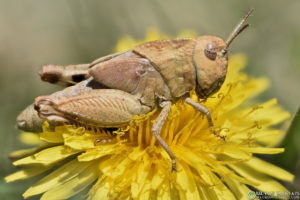
A 105mm macro lens is just strong enough to fill the lens with this grasshopper at 1x on a FF sensor, but not smaller animals.
The other bit of good news is that using a macro lens on a sensor smaller than full-frame increases the effective magnification because of crop factor. A regular macro lens effectively becomes more powerful on a small sensor because it’s projecting the same sized image on a smaller sensor. Most cameras use an APS-C size sensor, which has a crop factor of 1.5. That means the subject will appear 1.5 times bigger in frame than if it were shot on a FF sensor, making the effective magnification 1.5x. The micro 4/3 sensor enjoys a 2x crop factor, meaning that a standard macro lens produces the equivalent of 2x magnification, needing no additional gear for super magnification.
To avoid confusion, whenever I refer to magnification in this post I’m talking about on a FF sensor.
Reverse Mounted Wide Angle Lens
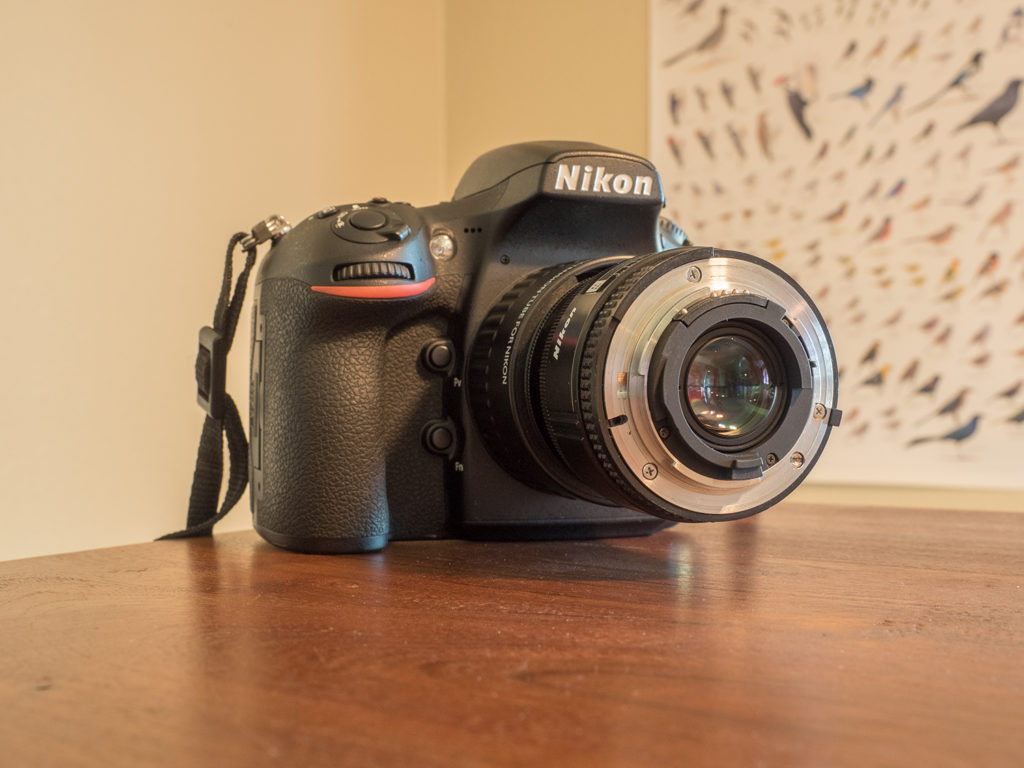
A reverse mounted wide angle lens is a small and extremely powerful way to reach super magnification, especially if using an older style lens with manual aperture control.
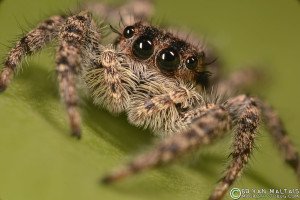
I took this Platycryptus Jumping Spider with a reverse mounted 24mm lens, at nearly 4x magnification.
Reverse mounting a wide angle prime or zoom lens produces the most magnification in this lineup with relatively high image quality. It’s free if you already own one, and requires only a cheap reversing ring to get started. It’s small and light, especially compared to the ridiculousness of stacked lenses.
When mounted conventionally, wide angle lenses take huge objects and make them fit on your sensor. When reversed, the optics work the opposite way; they take tiny subjects and make them bigger than life size. Therefore, the smaller the focal length, the more magnification you get. For example, an 18mm lens approaches 4x mag, which is so powerful that a house fly won’t fit entirely in the frame. I usually shoot at 2x, which is about what a reversed 28mm lens produces. Focal lengths that are best for super macro photography include 18mm, 24mm, 28mm and 35mm; the smaller the subject, the smaller the focal length you’ll need.
Therein lies the beauty of using a wide angle reversed zoom instead of prime lenses. Take the common 18-55mm zoom. At 18mm it produces almost 4:1 mag, and at 55mm it produces 1:1 mag like a regular macro lens. With this wide mag range it’s possible to shoot anything that you’re likely to encounter in the macro world without additional equipment or having to own a macro lens at all. For a more detailed description of shooting super macro with a reversed zoom check out this post about reverse mounting an 18-55mm lens. The drawbacks of using a zoom instead of a prime are softer corners, slightly lower IQ, and rougher bokeh, but they aren’t severe enough to discourage you from trying it. The only equipment needed to reverse mount a lens is a cheap reverse ring in the filter size of your lens, made to fit your camera’s mount.
The disadvantage to reverse mounting a lens is loss of auto aperture control because there’s no electronic connection between lens and camera. This means the lens will be stopped down to its minimum aperture, which will be too dark to see through the viewfinder. There are two options to overcome this. The best option is to use an older style lens that has a manual aperture control ring. The second option is to improvise a way to hold the aperture open. The screw-on aperture control ring from Fotodiox does just this. However, even with manual aperture control, the lens will still remain stopped down to whatever aperture you’ve set. If you shoot at at f/11 or smaller it will be too dark to frame the shot (this is a problem for DSLR shooters, but modern mirrorless cameras have electronic viewfinders that are bright even with little light). Generally the smallest aperture that still lets in enough light to see is f/8. This might sound like a deal breaker because you want the DOF provided by f/16 and smaller, but diffraction at small apertures is amplified on reversed lenses and severely degrades image quality above f/8. Don’t believe me? Check this out. Therefore, I stick to f/8, and focus stack when possible to restore DOF.
If you’re a canon shooter, rejoice because there are a number of inexpensive options to maintain full auto aperture control with reversed lenses. Two are the Neewer Reverse Mount Aperture Control and Meike Reverse Mount Auto Aperture Control.
Raynox 250 Macro Filter
This is the best option in the lineup to achieve super macro mag if you already own a standard macro lens. A close-up macro adapter lens is a glass element that mounts to the front of a lens. The main benefits of a close-up adapter are that you don’t lose any light transmission, and keep auto aperture control. There are many such close-up adapters, so why the Raynox 250? The 250 is generally the standard macro adapter that most serious macro photographers use because it has the best combination of excellent glass quality, high magnification, and low price. The Ryanox 250 increases magnification by a factor of 2. It brings a standard 1x macro lens to 2x. That’s not as powerful as a reversed wide angle lens, but 2x is the most useful mag for most field macro photography.
The Raynox 250’s defining feature is its achromatic glass element. Most inexpensive macro adapters are made from a single element that magnifies. A by-product of magnification is chromatic aberration, which manifests as fuzzy resolution and color fringing. The Ryanox 250 adds an achromatic element, which corrects chromatic aberration and restores clarity. Most macro adapters that include an achromatic element cost significantly more. Though the Raynox 250 is sharp as far as macro adapters go, there will still be a slight degradation in resolution because you’re adding an additional element of glass.
The Raynox 250 isn’t a threaded filter that’s specific to any lens diameter, but instead has spring loaded brackets that clasp to any lens diameter between 52-67mm. It increases mag on any lens, not just macro lenses, so you can use it to turn a 50mm prime lens or zoom into a macro lens.
Extension Tubes?
Extension tubes are a terrible way to reach super macro mag, but they’re useful for increasing magnification on existing super mag setups. They’re also good for reaching 1:1 mag on non macro lenses like a 50mm prime, but that’s not what this post is about. Let me explain. One way to achieve super macro mag with extension tubes is to add them to a macro lens. Unfortunately, on a standard 105mm macro lens it takes 100mm of extension tubes to reach 2:1 mag, which is wrought with problems. A macro lens sitting atop 100mm of extension is like having an artillery piece protruding from your camera. That’s too unwieldy to maneuver in the field, and makes finding your tiny subject that far away from your eye too difficult. More importantly, light is forced to travel through such a long tunnel that diffraction becomes severe, causing poor, fuzzy image quality. Vignetting is also so extreme that you’re only left with the center of your image and the corners cut off. The advantage of extension tubes is that it maintains full auto control of the lens, but that’s hardly worth the significant problems.
Extension tubes are very useful, however, when adding them to reverse mounted wide-angle lenses. When a 36mm extension tube is added to a reversed 18mm, for example, it brings the lens’ 4:1 mag up to 5:1 without vignetting or much diffraction. Therefore, attaching extension tubes to a reversed wide angle zoom or prime lens produces a devastatingly powerful super macro lens for well under $100 (if you already own the lens).
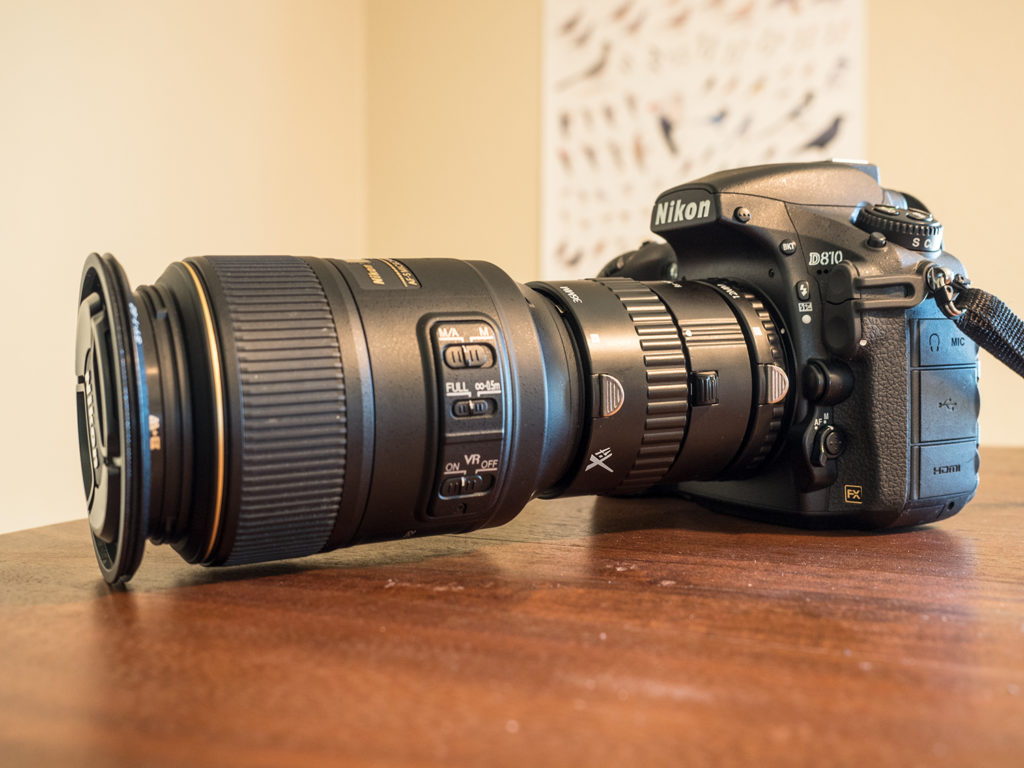
Extension tubes are not an efficient way to reach super magnification. Here even 70mm of tubes can’t muster 2x mag on this 105mm macro lens, and produces severe image quality problems.
Razor thin DOF
It’s important to understand that as you increase magnification, Depth of Field decreases significantly. When you first use any of these options such a thin slice of your subject will be in focus that it might appear as if nothing is in focus at all. Practice will quickly increase your proportion of successful shots. If you’re taking a single image, as opposed to focus stacking, make sure to focus on the insect’s eyes. Also, to increase the amount of the animal in focus, align the camera perfectly parallel to subject, not at an angle. Flash is required for sharp, hand-held single shots. Focus stacking is a staple macro technique to restore DOF in the final image. Focus stacking is when you take multiple photos of the subject where each exposure focuses on a different slice of the subject from front to back. The images are then merged using stacking software into a composite image where the subject is in sharp focus from tip to tail. This only works if each shot is perfectly aligned, meaning the subject must remain still, and the camera must be fixed.

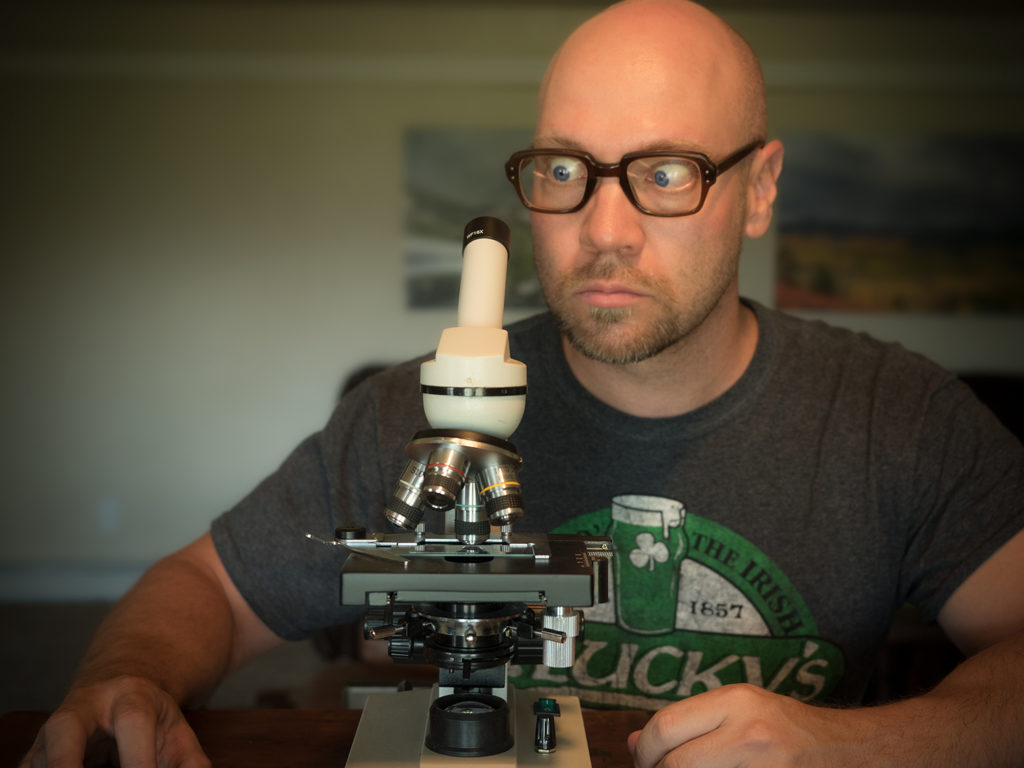
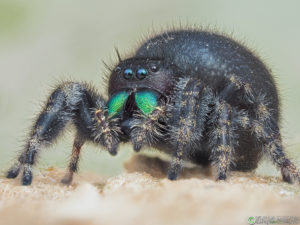
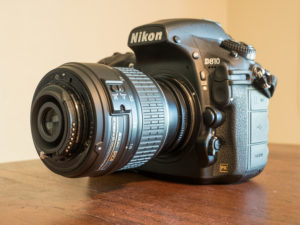
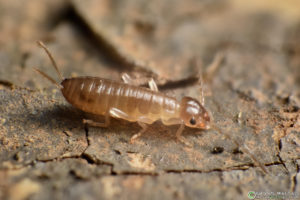
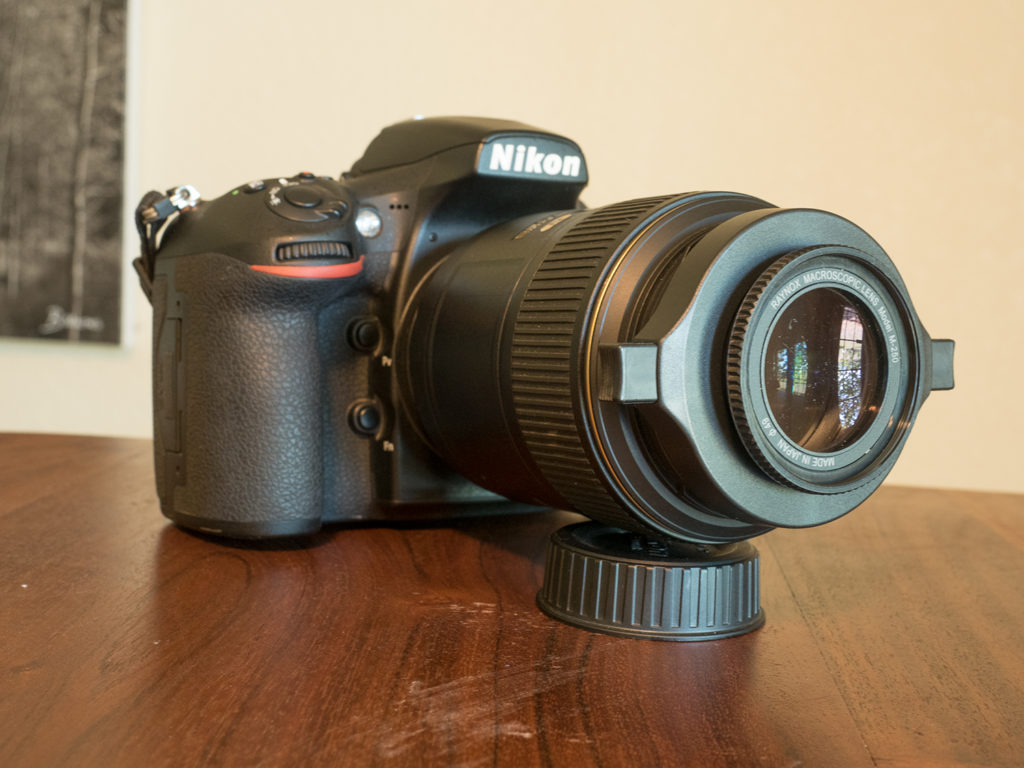
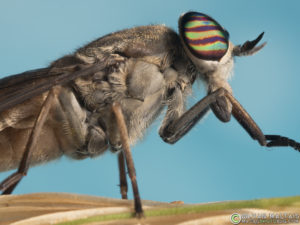
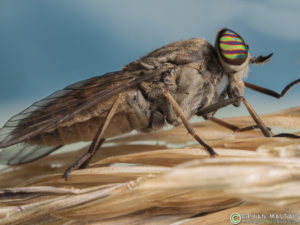
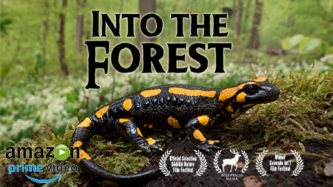

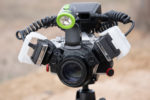
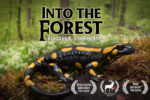
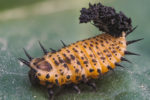
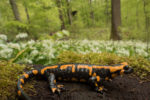
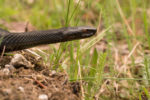
Hello
May i chcek with u if u try using the reverse len together with a raymox pls? Thanks
This does not work because when most lenses are reversed, the Raynox macro adapter lens is actually thicker than max focus distance of the lens. Also the depth of field is far too shallow.
HI! Thank you for the very informative article about macro /super macro photography. i am new to macro photography and i have currently tried some shots
with my Nikon D750 with extension tubes and the 24-85mm wr lens. I am wondering if i should “move” to mft – Olympus since the new OMD-5-mk111 has in built
auto focus stacking and a 60mm-2.8 macro lens which works with this feature ?Also i understand Olympus system has a better dof than FF. I would still keep the
Nikon for my landscape photography, but since i have Olympus pen-F which i might change to OMD-5.mkiii due these reasons.One question.. is “super” macro
possible with the Olympus 60mm macro lens or is something else needed in addition ?
Thank You …hopefully you have the time to reply! Regards Risto Pilvi
I switched to Olympus with the 60mm myself because the in-lens focus stacking was a game changer. I now own the EM-5 III. MFT has better “effective” DOF than FF because you’re projecting the same image on a sensor that’s 1/2 the size of FF. Taking a FF image and cropping it 50% achieves the same effect. The Oly 60mm achieves 2:1 “effective” magnification on its own, which is “super” macro, but again, only because you’re projecting the same image on a smaller sensor. For example, if you take a FF image shot with a 105mm macro lens, then crop it 50%, the image now has 2:1 magnification.
This is the setup I use that achieves 3:1 super magnification, extreme portability, and in-camera focus stacking:
-Olympus EM-5 III camera body
-Olympus 60mm Macro Lens
-Raynox 250 Macro Filter